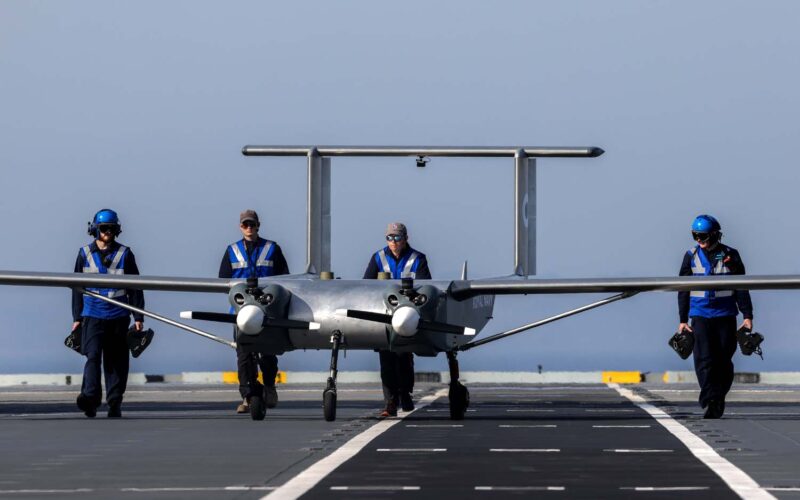A drone has completed a historic flight by landing successfully on the British Royal Navy’s HMS Prince of Wales, without any input from a remote pilot, delivering supplies in the process.
The test was conducted using the HCMC drone developed by British company W Autonomous Systems (WAS). The drone’s flight to the carrier from Predannack in the Lizard Peninsula, the most southerly point of the British mainland, was undertaken following a special authorization from the UK Civil Aviation Authority.
The Royal Navy is aiming to integrate drones into its operations alongside F-35 Lightning jets, Merlin, and Wildcat helicopters. These drones would handle tasks such as transferring supplies between ships, offering cost-efficiency and reducing risks to aircrew.
The WAS ULTRA (Unmanned Low-cost TRAnsport) is a twin-engine heavy-lift autonomous drone with a ten-meter wingspan, capable of carrying a 100-kilogram (220-pound) payload up to 1,000 kilometers (620 miles). It can land on uneven terrain and requires only a 150-meter (500-feet) runway to operate, just over half the length of the flight decks on the UK’s Queen Elizabeth-class aircraft carriers.
The use of supply drones, also being studied by the US Navy and the French Marine Nationale, would enable maritime forces to preserve their other aircraft for more critical tasks. It would also allow more flexibility in the deliveries, with light supplies such as parts or medical equipment being readily available.

